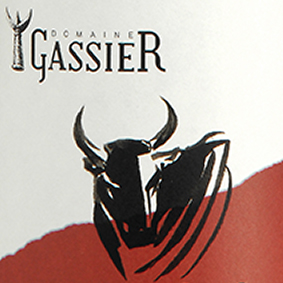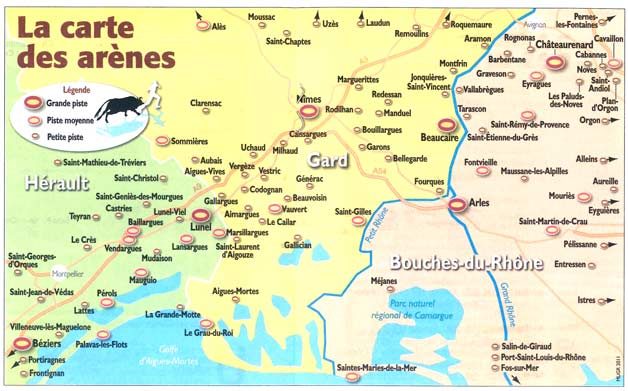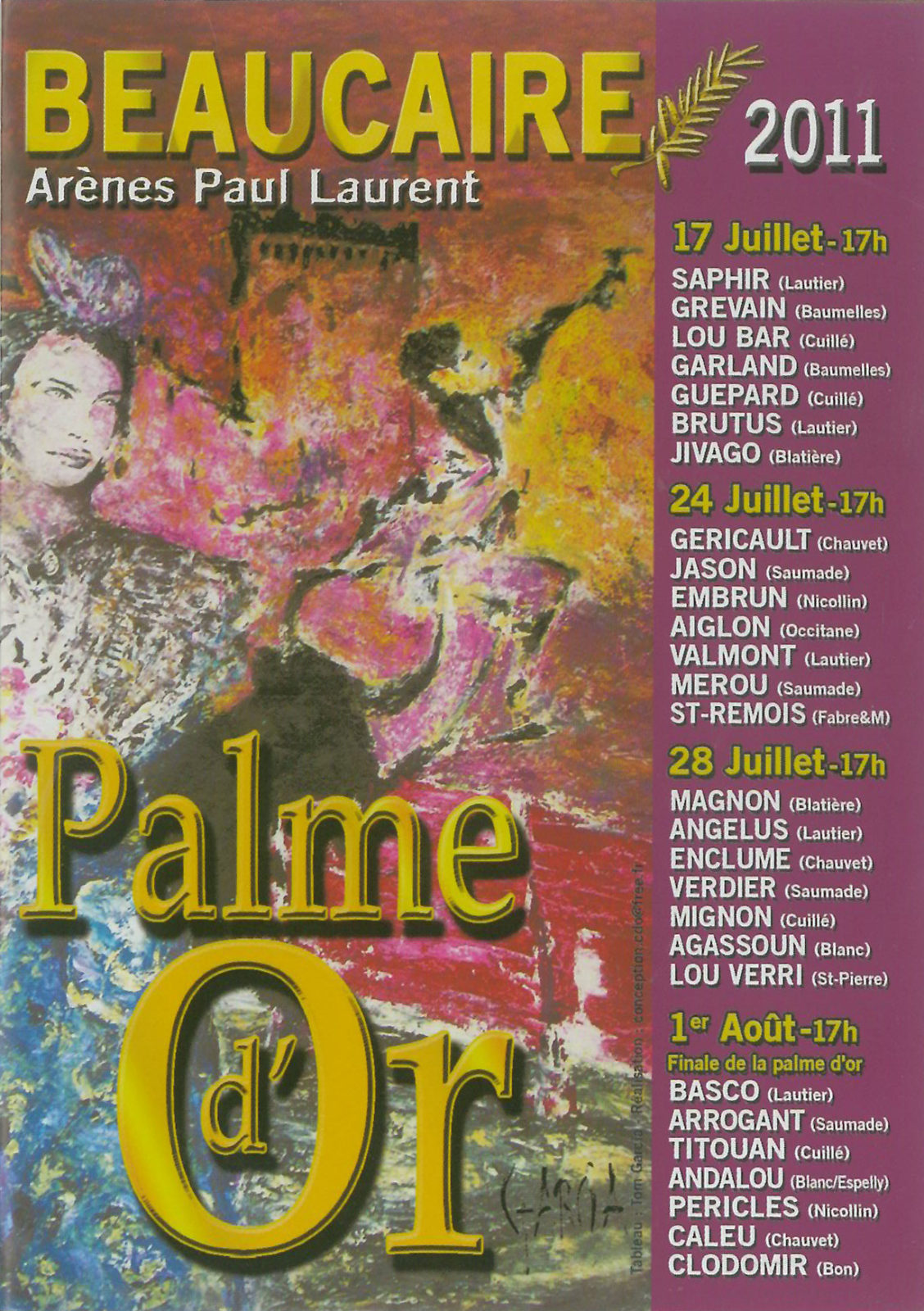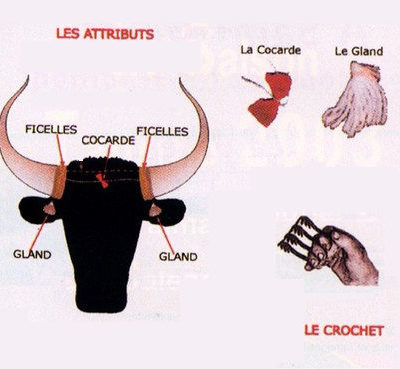
This is the story of our wine Lou Coucardié. For all those people who ask me what it means, why use a name that is so hard to spell, let alone pronounce, I want to share with you our afternoon at a “Course Camarguaise” this past Sunday. But before I do I need to give you some reference points. Our vineyards, here in Costieres de Nîmes are at the heart of what I like to call the “Pays de Biòu” (or the nation of bulls). We are just north of the Camargue, the Rhone River delta where bulls have dominated the landscape since Roman times. Here the bull is the symbol of our regional pride and an icon of our arts, culture and folklore. As you can see from the map below, every little village, every town and large city in this area has its arena (“piste”), where a large part of our summer afternoons are spent watching and participating in bull games.

The “Course Camarguaise” is a match between men and bulls. There is no slaughter, no blood shed (at least not to the bull!) Here the bulls are the stars as you can see by the billboard for the Palme d’Or of Beaucaire. The names you see under each date are the bulls (and in smaller letter the ranches they come from). Agile, fierce and untamed, the bulls return to the marshes at the end of the game.

So here’s an idea of what you might see if you came to a “Course Camaguaise”. A long trumpet blast announces the bull. He enters the arena and is allowed a minute to get acquainted with the “piste”, the noise and the light. During that minute no one is allowed to enter the arena. His opponents observe the bull from the outside track. The president of the course announces the bull’s name, his ranch, his previous awards and how much cash each of his “attributs” are worth.
At the end of the minute, a short trumpet blast is played and the competition can begin. The “tourneur” will get the bull’s attention to line him up for the “raseteur”. The “raseteur” will then start running and the bull will charge him. The bull and the “raseteur” then cross paths and the “raset” takes place. With his hooked comb (called a “crochet”), the “raseteur” will try and grab an “attribut” (first the “cocarde”, then the “glands”, and finally the 1st and 2nd “ficelles”). The “raseteur” then runs to and jumps over the barrier, and a good “cocardier” bull will pursue him all the way to the wall (called a “coup de barrier”). When this happens the bull’s exploit is greeted with a rift of Carmen.

The « ficelles » are the hardest « attributs » to get because they are wound around each horn. Each bull depending on his quality will have the strings wound around his horns a different number of times: the best 8 times, the easiest 30 times. Even so, often the best bulls keep their strings. At the end of the 15 minutes (or earlier if all his “attributs” have been taken) the bull leaves the arena. The winners are the raseteur with the greatest total and the most fierce bull who gave the “raseteurs” the hardest time.
The season starts in April of each year, and finishes in October. Every week there are dozens of these matches that take place throughout our region. But three dates are never missed by the « afeciouna » (the true fans): The Cocarde d’Or, The Palme d’Or and The Final of the Trophée des As. In the next missive I’ll show you what we saw at the Arena of Beaucaire for the 2nd day of the Palme d’Or on Sunday, July 24th, 2011. In the meanwhile, I invite you to discover the Course Camarguaise with this video.
To enter our website, you must be of legal drinking age in your country.